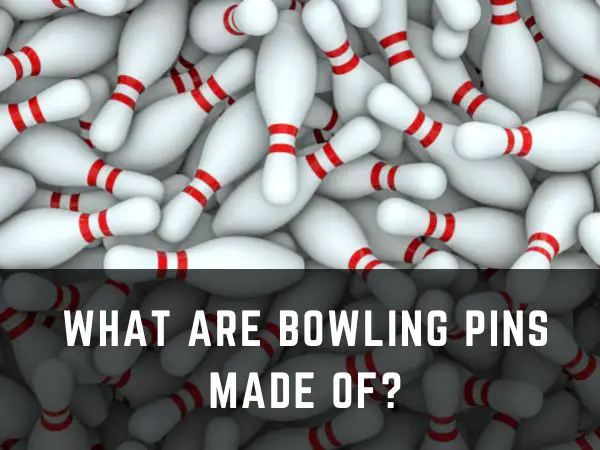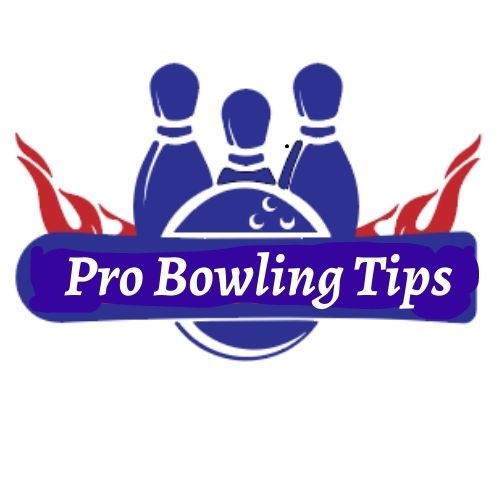
Think about the impacts bowling pins go through every time we launch the heavy balls at a high speed. They sure do scatter everywhere to ensure our scores. But what materials are in there? Have you ever wondered what are bowling pins made of? Well, great if you did. Because today, we will talk about bowling pins and how they are manufactured. For that, we need to take a look at the history of bowling pins and how it was done back then. So my fellow curious bowlers, stay tuned to learn more about bowling pins construction.
Background history of bowling pin making
Did you know that the evidence of bowling dates back to 300 AD? However, modernization took place way later. During the early 1800s, bowling finally started to appear in various places in the United States. But the official standardization, specifications, and rules prevailed later in 1895. This is when American Bowling Congress (ABC) was formed and the bowling pins were finally made following some specifications.
Materials used in the Past:
Back in the day, each bowling pin was made out of a single block of Hard Rock Maple Wood. Not only these pins were durable but also they were easy to manufacture. Considering there wasn’t a lot of machinery available at that time, manufacturers did their best with the resources available to them.
Problem with the old materials:
Sadly, there was a huge issue regarding this method of manufacturing bowling pins. The drawback was that not all blocks of maple wood had the same density. As a result, the weight of the bowling pins differed significantly which isn’t really fair for bowlers. Hence, the bowling pins were difficult to standardize.
Coating method used in the Past:
The coating was another weakness of bowling pins back in the day. You will be surprised to know that the wood pieces were simply coated with white lacquer in a single layer and then it was finished with a clear lacquer, also in a single layer.
Problem with the old coating method:
As you might know already, the old bowling didn’t have automatic pin-setting machines. This is why in every bowling alley, there were workers who set the pins for the bowlers. One thing they noticed is that the solid bowling pins often needed replacing because they would break, crack, or chip easily. The damaged pins were not up to the mark for use in games. Moreover, it was costing bowling alley owners some unwanted costs.
What are the core materials used in bowling pin?
So what’s inside bowling pins these days? After standardization, manufacturers tried various materials other than Hard Rock Maple Wood. Other core materials like metals, stone, plastics, aluminum, acrylics, rubber, and even other kinds of wood were taken into consideration. But later the core material was slightly changed. The pins you see these days are made of shredded wood and are mixed with a bonding agent. Then it is pressed into a bowling pin shape and size. And what kind of shredded wood is that? Well, for more than 200 years, it is still that good old maple wood because no other material has been proven to provide the same scoring opportunities, durability, and sound.
What are coating materials used in bowling pin?
So is it just paint that is used on the outer layer of the bowling pins? No, that’s not enough protection for the bowling pins. When the automatic pin setting machine was invented and installed in most bowling centers, people started to realize that they need advanced durability of the pins. And what can make that happen? Well, the first successful multi-layer coating system called “ethylcellulose” emerged and the rest is history. This changed the bowling ball’s durability completely. You can hit the pins as long as you want using force and speed, and they will remain indestructible. In today’s bowling pins, you can see using either nylon or DuPont’s Surlyn. Nylon is a cheaper alternative to Surlyn. Bowling pins with Surlyn coating tend to be more expensive and of course, more rigid.
Bowling Pin Making Process:
So have you ever wondered how the bowling pins are constructed? How the entire process is executed? Well, allow me to enlighten you with facts about bowling pins.
How Bowling Pin making started?
Do you know that the construction process of bowling pins hasn’t changed since the 1950s? For more than 60 years, the making process of a bowling pin is the same. This magical transformation was introduced to the bowling industry by Vulcan Manufacturing. The company did its research and found out that instead of a solid piece, some small wood pieces glued together make a better option. So to prove that a standard solid (one-piece wood block) pin was cut in half before it was given its final shaping. Then the pieces were glued with a flat piece of maple wood between the halves.
Thanks to this design, it was then possible to adjust the weight of each pin and make them all weigh the same. However, this particular design gave the bowling pins more grainy edges that needed smoothing. The coating was adding more weight which was a big issue. This is why, by the year 1961, the solid-piece wooden pin had become non-existent altogether. Everyone started to follow Vulcan’s design of gluing individual wood pieces together with a bonding agent and then putting it into the shape of a pin. Plus, the previous method was also more costly. So this was a win-win situation.
Several other methods were put to test, but none of them were ever up for development. This is why bowling pins are produced quite similarly to the 1950s. Except for the coating technique, nothing significant has changed.
How The Bowling Pins are coated?
I have mentioned earlier how the coating process was done in the past. After the new way of producing bowling pins started to take over, various kinds of coating methods were also introduced. In the year 1954, Henry Moore introduced bowling pins with plastic coating. The bowling industry immediately embraced that. Then more interesting ones started to pop up.
One of the most durable coatings is the ethylcellulose coating system. This particular method contained seven layers, meaning, there are 7 steps to get the coating process done. For that, bowling pins are dipped into a coat that is specifically made for sealing the pores of the wood surface. Next, the pin is dipped into another coating that is designed for better adhesion. This process is important for the following steps. After that, five layers of ethylcellulose are applied. To add a stronger foundation for all the layers, a nylon mesh fabric is stretched over the pin right after the first step.
Commonly you can see two coatings these days— nylon and DuPont’s Surlyn. The nylon method will save you a few bucks, no doubt. On top of that, nylon is easier to deal with during the molding process. Surlyn, on the other hand, is a bit pricey. The bright side is that this process is more rigid than the nylon process.
Conclusion
Bowling pins are what you hit with your bowling ball. To take the hit, they need to be stronger and better. This article describes how it is produced and coated for better performance. So in case, you were wondering how they are made and somehow end up reading this article, well, now you know. I hope, it was informative enough for you. If you have any more questions, you know the deal. Just leave a comment, and I will get back to you shortly. As always, good luck and never stop having fun while bowling!

Passionate Bowler and Bowling Enthusiast
Jess Pinelli is a dedicated bowling enthusiast with a deep love for the sport that spans over 6 years. With numerous strikes, spares, and a few gutter balls under hes belt, he has honed his skills on lanes across the country. Pinelli’s journey in the world of bowling has been a remarkable one, from casual weekend games with friends to competitive league play and even a few local tournaments.
Driven by her passion for the game, Pinelli decided to channel her expertise and knowledge into the digital realm, becoming a prolific author on this bowling website. She’s your go-to source for everything bowling-related, from mastering the perfect hook to choosing the right bowling ball and even navigating the world of bowling etiquette.
When she’s not busy writing informative articles or reviewing the latest bowling gear, you’ll likely find Pinellis at her favorite local bowling alley, helping newcomers improve their game or enjoying some friendly competition with fellow bowlers. She firmly believes that bowling is not just a game but a community, and she’s committed to fostering that sense of camaraderie both online and offline.



